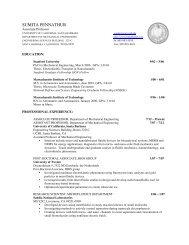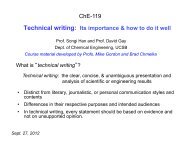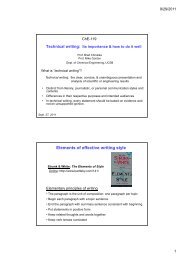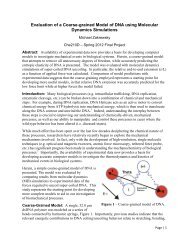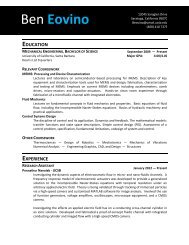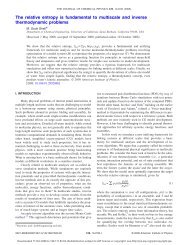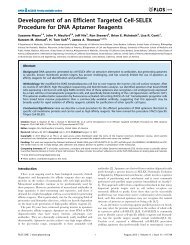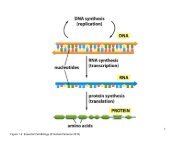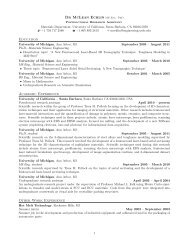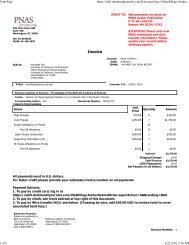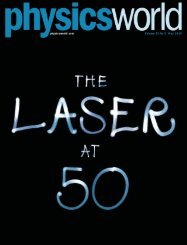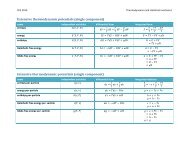Homework 4 - UCSB College of Engineering - University of ...
Homework 4 - UCSB College of Engineering - University of ...
Homework 4 - UCSB College of Engineering - University of ...
Create successful ePaper yourself
Turn your PDF publications into a flip-book with our unique Google optimized e-Paper software.
Problem 2<br />
Glucose transport across the plasma membrane into the intracellular space has been identified<br />
as the limiting step in the delivery <strong>of</strong> this energy source to muscle cells. So-called GLUT<br />
membrane transporter proteins bind to and facilitate transport <strong>of</strong> glucose into the cell. In<br />
particular, impairment <strong>of</strong> this transport mechanism is strongly implicated in patients with type<br />
2 diabetes and modern research efforts are attempting to understand how such impairment<br />
occurs [Shepherd and Kahn, New England Journal <strong>of</strong> Medicine 341, 248 (1999)].<br />
a) Consider a simple facilitated model <strong>of</strong> glucose transport. Let extracellular and intracellular<br />
concentrations <strong>of</strong> glucose be given by and , respectively. Let the total concentration<br />
<strong>of</strong> GLUT proteins in the plasma membrane be given by . The mechanism <strong>of</strong> glucose<br />
transport might be given by<br />
<br />
<br />
<br />
<br />
<br />
At the same time intracellular glucose is consumed at a rate proportional to its concentration,<br />
<br />
<br />
products<br />
Making rapid equilibrium assumptions as necessary, find the steady-state concentration as<br />
a function <strong>of</strong> , , and the rate coefficients and equilibrium constants defined above.<br />
Show that it can be put into the following form,<br />
<br />
max <br />
,app<br />
b) This simple model neglects important known effects <strong>of</strong> the small protein insulin, thought to<br />
modulate glucose transport through the GLUT proteins. Diabetic patients develop a resistance<br />
to insulin’s effects. One potential mechanism for the manner in which insulin interacts with<br />
transport is that its binding to GLUT is required. The mechanism above might be modified as,<br />
<br />
<br />
<br />
<br />
<br />
<br />
<br />
<br />
<br />
<br />
where is extracellular insulin. Show that can also be put into the form above, but with<br />
potentially different expressions for max and ,app . (Consumption is also present here.)<br />
c) An alternative mechanism for insulin is that it increases the concentration <strong>of</strong> GLUT in the<br />
membrane, for example, by regulating GLUT’s expression and transport. An approximate<br />
relationship for this mechanism might be . Experiments have measured the steadystate<br />
concentration <strong>of</strong> glucose in muscle cells as a function <strong>of</strong> extracellular insulin concentration<br />
[Gottesman et al., J. Clinical Investigation 70, 1310 (1982)]. These reveal that always<br />
increases linearly with . According to your models in (a) and (b), then, which <strong>of</strong> these two<br />
mechanisms is more likely Be sure to justify your answer.




